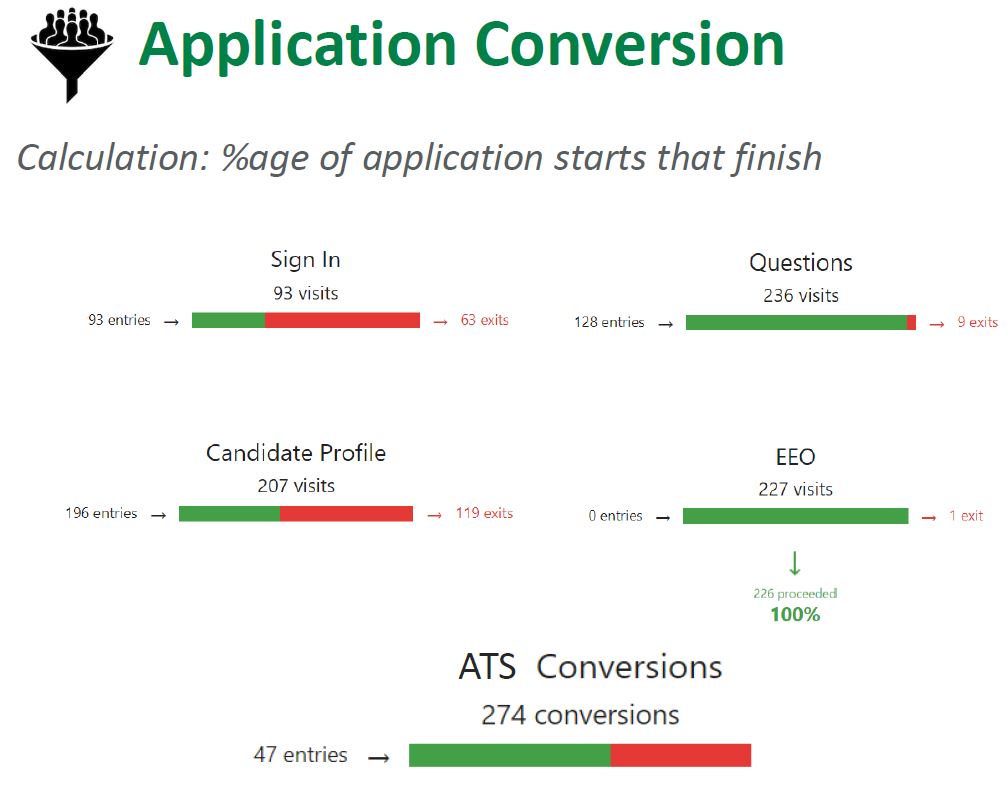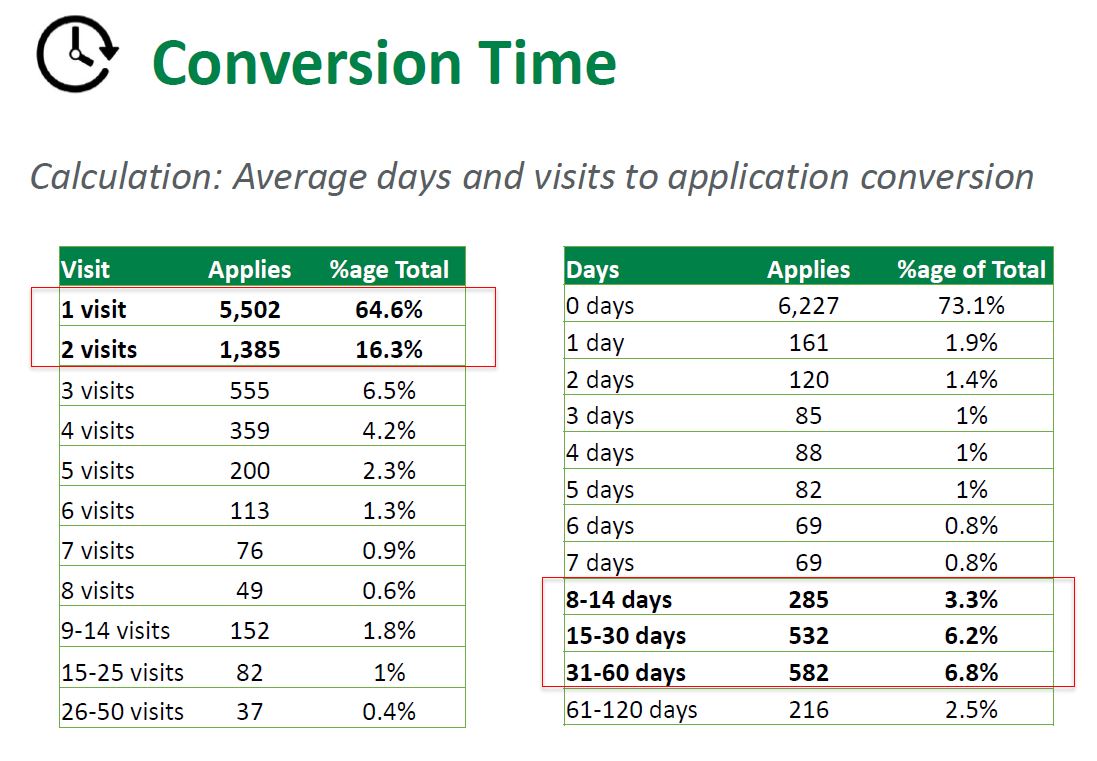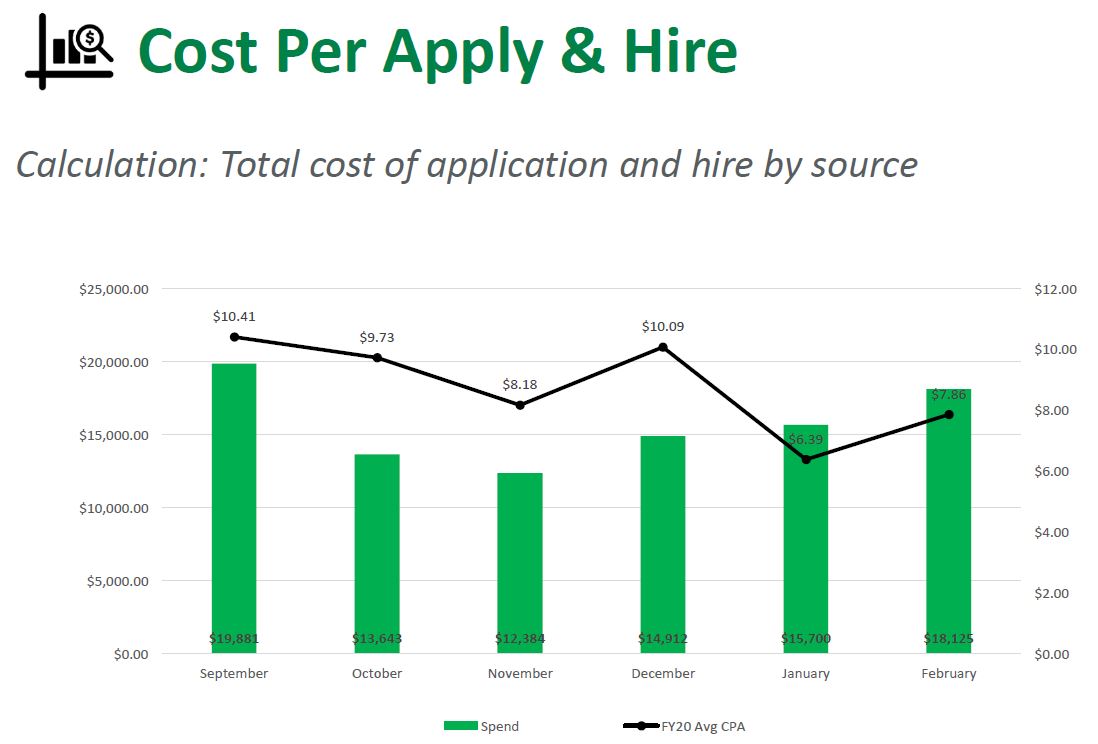-
5 KPIs for recruiting that every company needs
Posted by Ashley Kauffman on June 2nd, 2020 
You’re excited about your company’s new career site content. Your brand is on-target, your strategy is solid, and you’re ready to attract the right candidates. Soon, however, you realize that your site—and maybe your application process—is underperforming. You expected more (and better) candidates applying for your open positions. It’s important to remember this reality about performance: if you can’t measure it, you can’t improve it.
So, which Key Performance Indicators (KPIs) are the most useful when it comes to tracking your candidates and how they navigate through your site? Being able to build the ideal candidate profile by reviewing the right KPIs is what will help you adjust your site and strategy, save dollars and get the volume of applicants you’re looking for in the end.
1. Career Page Conversion
This first KPI tells you the percentage of visits that convert into a completed application. For example, if you have 10 visits and 10 applies, you have a 100% conversion rate. If you have 10 visits and only 1 apply, you have a 10% conversion rate. This is the first number we look at when gauging performance.
Statistics show that at least 80% of candidates start their job search on Google, with the goal of heading directly over to your site. From a candidate’s perspective, a company’s career site is where the most trusted company information can be found. Career page conversion gives us a look at how easy it is to maneuver through your site, whether your content is relevant and whether you are attracting the right candidates.
Here’s an example: if we were to use a healthcare benchmark of a typical conversion rate (15-20%), and you’ve been reaching this target, then you know you’ve been running a successful strategy with the right audience and the correct content. If your conversion rate is lower (10%), then there are things you should consider reviewing, such as who you’re targeting, what media you are using or how easy it is for candidates to find and apply for jobs on your career site.
2. Application Conversion
This KPI looks at the ATS experience: how many applicants start their application vs. how many finish it. Ask yourself these questions: are you tracking only how many start the application process or are you able to track every step in between? If you’re not capturing and reviewing every step in between, you may be missing out on important data insights.
It’s not enough to simply look at that start/end statistics. NAS can help you track each and every important step of the ATS process. This info is critical in allowing you to see where candidate drop-off is occurring and to quickly address it. For example, you might be asking for information that’s not relevant (or too personal) for the level of the job. Or maybe you’re losing candidates at a step that requires the use of an external link, such as uploading a resume. Knowing this type of data will help you move toward a better applicant experience.

3. Conversion Time
As you can imagine, timing plays an important role in the application process. It’s no surprise that every employer wants to find the right candidate as quickly as possible. But many times, a candidate may prefer to make several visits before converting to applicant.
Looking at conversion times can help you set realistic expectations. NAS analytics capabilities let you see not only the total of applies, but also how long it takes to get each candidate there (day, number of visits). Having this information plays an important part in your strategy. If, for instance, you’re planning on executing a retargeting campaign, it’s essential to know your organization’s sweet spot on when a candidate returns.

4. Mobile vs. Desktop
Knowing what type of device—desktop or mobile—your candidates are using is a valuable KPI and helpful when you’re building your candidate profile. Targeting your content to the preferable device will give you the best outcomes. The type of positions you’re looking to fill will often determine which device is going to generate the most traffic.
For example, RNs and healthcare workers are always on the go. They’re quickly looking for jobs, but many don’t have a resume on their mobile so it’s unlikely they will apply from their phone. While we see high traffic coming in via mobile, their apply complete conversions are very low. On the other hand, retail may have different needs. They generally expect a quick and easy application processes. It’s not unusual for these candidates to apply when they’re shopping in your store, so you’ll want to target them via mobile device for the best results.
Without this KPI, you’re often working in the dark and doing some guessing to get the results you want. The good news is that having the appropriate data will prevent you from having to do that.
5. Cost Per Apply & Hire
This KPI can make a big impact on your organization’s bottom line, especially right now when we’re all trying to do more with less. So, knowing your cost per apply, and ultimately cost per hire, can help you create strategies that will yield the highest results with the lowest spend. As you start to make changes to strategy, media and site structure and content, you’ll want to know how they impact the amount you are paying for each application and hire – and continue to work with the tactics that drive those costs down.

Are you measuring each of these 5 KPIs? If you don’t know, ask the individual on your team who is in charge of your site. If you find out you don’t have the analytics to get these KPIs, it might be time to partner with NAS. Through our analytics offerings, we can deliver access to vital information designed to help you get the hires—and results—you need.
We’d love to be able to show you our dashboard and discuss the major impact it could have on your recruiting efforts. Just reach out to me and I’d be happy to continue the conversation.
Ashley Kauffman
As Director of Analytics with NAS Recruitment Innovation, Ashley works closely with our clients to help them strategize on recruiting A-level talent based on data intelligence. Ashley focuses on telling a story for our clients in a way that not only validates their current strategy, but also anticipates future opportunities. Whether your goal is delivering effective employment brands, career sites and social media strategies, or comprehensive online or traditional ad campaigns, Ashley leverages her ten plus years of industry experience to achieve success and exceed client expectations.



